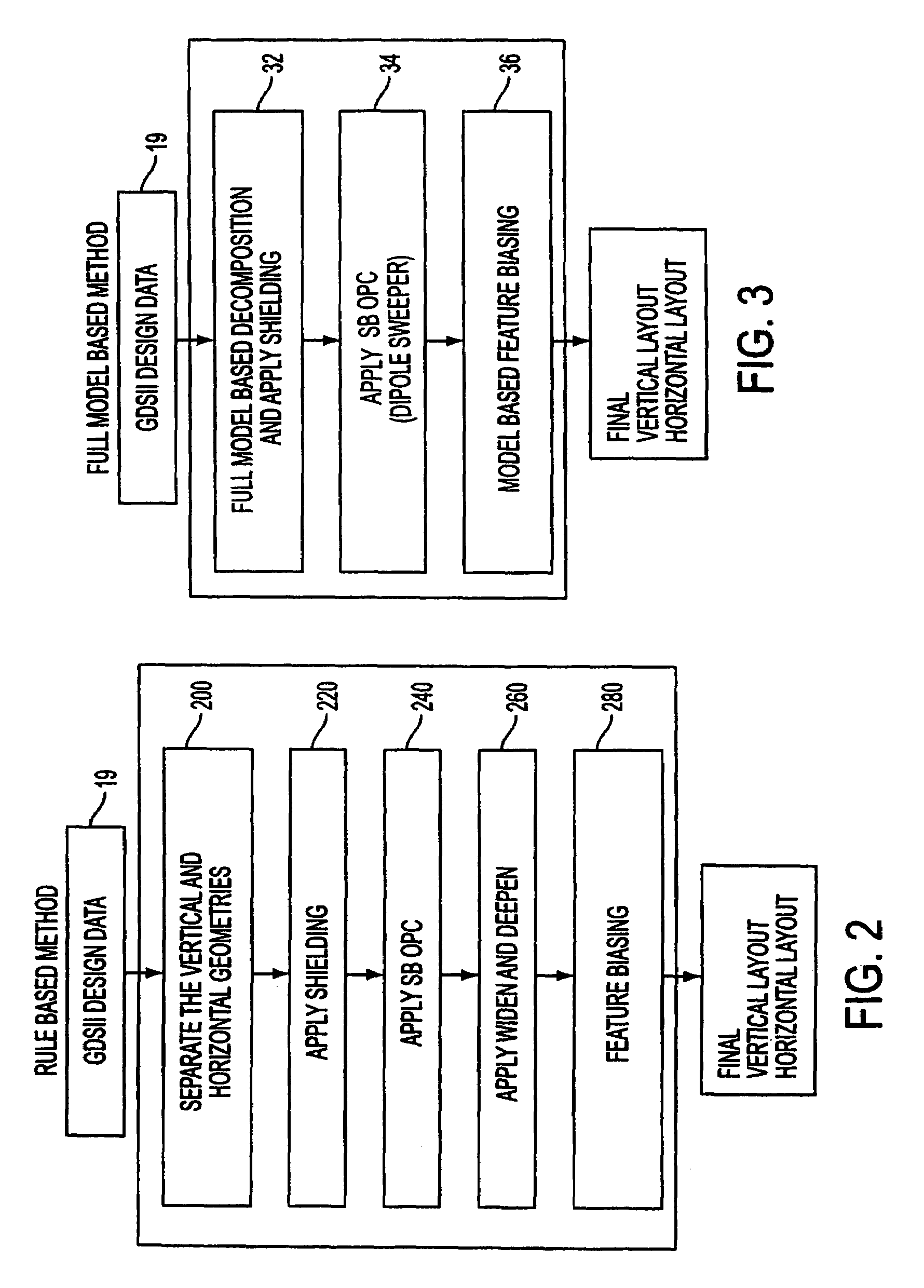Method and apparatus for performing model-based layout conversion for use with dipole illumination
a dipole illumination and model-based technology, applied in the field of photolithography, can solve the problems of reducing the size of the integrated circuit, the critical dimension of the corresponding mask pattern approaching the resolution limit of the optical exposure tool, and the shrinking rate of the design rule outpacing the progress of both the exposure wavelength reduction and the high-speed advancement. , to achieve the effect of simplifying the layout conversion process
- Summary
- Abstract
- Description
- Claims
- Application Information
AI Technical Summary
Benefits of technology
Problems solved by technology
Method used
Image
Examples
Embodiment Construction
[0043]As explained in more detail below, the preferred embodiment of the present invention provides a method and apparatus for generating horizontal and vertical masks for use with dipole illumination. Specifically, the method of the present invention relates to a model-based layout-conversion method for generating the horizontal and vertical masks from a target design.
[0044]FIG. 3 is an exemplary flowchart illustrating the model-based layout-conversion method of the present invention. As is shown in FIG. 3, the model-based approach entails essentially 3 basic processing steps.
[0045]Referring to FIG. 3, the first step (Step 32) of the model-based approach comprises applying shielding utilizing a model-based OPC to the vertical edges in the target pattern so as to define the horizontal mask, and applying shielding to the horizontal edges in the target pattern so as to define the vertical mask. In other words, the starting point for both the horizontal mask and the vertical mask is th...
PUM
| Property | Measurement | Unit |
|---|---|---|
| width | aaaaa | aaaaa |
| width | aaaaa | aaaaa |
| width | aaaaa | aaaaa |
Abstract
Description
Claims
Application Information
 Login to View More
Login to View More - R&D
- Intellectual Property
- Life Sciences
- Materials
- Tech Scout
- Unparalleled Data Quality
- Higher Quality Content
- 60% Fewer Hallucinations
Browse by: Latest US Patents, China's latest patents, Technical Efficacy Thesaurus, Application Domain, Technology Topic, Popular Technical Reports.
© 2025 PatSnap. All rights reserved.Legal|Privacy policy|Modern Slavery Act Transparency Statement|Sitemap|About US| Contact US: help@patsnap.com



